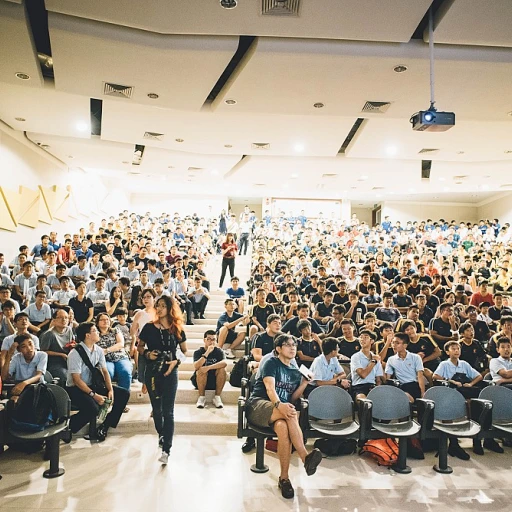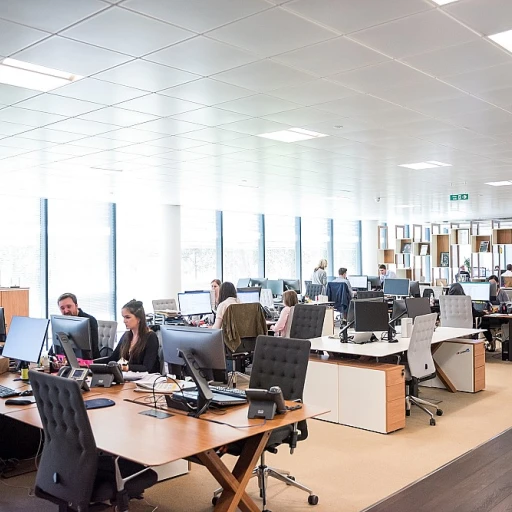
Understanding the Role of HRIS in Goal Setting
The Intersection of HRIS and Employee Goal Setting
In the modern workplace, the strategic implementation of Human Resources Information Systems (HRIS) plays a crucial role in optimizing goal setting for employees. Understanding this dynamic is key to improving employee performance and fostering professional development within an organization. HRIS acts as a bridge that aligns individual employee goals with broader organizational objectives, creating a seamless process of performance management.
Supporting Goal Setting with HRIS
HRIS platforms enable specific and measurable goal setting by recording, tracking, and managing performance goals. They offer a foundation for setting various types of goals, whether short term or long term. Through integrated features, management can set SMART goals that are Specific, Measurable, Achievable, Relevant, and Time-bound, ensuring they align with individual capabilities and team needs.
Enhancing Employee Engagement and Performance
By leveraging HRIS, companies can also enhance employee engagement. This digital tool provides management with insights on employee performance and highlights opportunities for professional development. Additionally, HRIS facilitates regular performance reviews, which are vital for improvement discussions and feedback mechanisms. This systematic approach aids in documenting and addressing potential performance issues, ultimately contributing to an aware and accountable workplace environment.
Key Elements of Effective Employee Goals
Core Components of Productive Goals
Creating effective employee goals involves understanding and incorporating several key elements. These components ensure that the goals not only benefit the employee but also align with the overarching objectives of the organization. Here’s a breakdown of what constitutes productive goal setting:- Specific and Clear: Clear goals are neither too broad nor too complex. They directly point out what needs to be achieved, allowing the employee to focus on precise tasks. This specificity is beneficial in performance reviews and ensures that both employees and management understand the expectations.
- Measurable Outcomes: Goals should have quantifiable indicators to evaluate progress and success. Measurable outcomes facilitate effective tracking, where both the employee and management can assess how well goals are being met over time.
- Achievable Objectives: While goals should be challenging to foster growth, they must also be attainable with the resources and time available. This balance maintains motivation and engagement among team members.
- Relevant to the Role and Organization: Aligning goals with the organization’s objectives ensures that employee efforts contribute to the overall mission. Goals should reflect the duties and responsibilities of the job role, improving overall performance.
- Time-bound: Deadlines and time-based milestones provide a structured timeline for achieving goals, making it easier to develop long-term and short-term plans in performance management. Having a clear endpoint prevents tasks from dragging indefinitely.
Utilizing HRIS to Align Goals with Company Objectives
Leveraging HRIS for Strategic Goal Alignment
In the realm of goal setting within organizations, aligning employee goals with the company's objectives is crucial for achieving broader business outcomes. Human resources information systems (HRIS) are invaluable tools that assist in this alignment process, ensuring that individual endeavors contribute to the overall success of the organization. HRIS allows the management team to:- Integrate company objectives seamlessly: By centralizing data, HRIS enables a clear mapping of organizational objectives to individual employee goals, ensuring everyone is working towards the same strategic aims. This eliminates the discrepancies that often occur when objectives are set manually.
- Enhance employee performance through goal specificity: A well-implemented HRIS system can help employees create specific, measurable, achievable, relevant, and time-bound (SMART) goals that contribute to their professional development. SMART goals examples include improving customer service ratings or completing a leadership training program within a specific timeframe.
- Facilitate goal tracking and updates: As organizations evolve, so do their objectives. HRIS platforms make it possible to update goals in real time, aligning them with any changes in company direction and maintaining employee engagement.
Sample Goals for Different Employee Roles
Example Goals Tailored for Varied Roles
Crafting goals that resonate with each employee's role and responsibilities can significantly enhance performance and engagement. Tailored goals ensure that employees understand their contributions to the organization's objectives. Here are some well-defined examples across different roles:
- For Customer Service Representatives: An effective goal could focus on reducing response time to customer queries by 20% over the next quarter, aligning with the team’s key performance goals. This helps improve customer satisfaction, a vital performance indicator.
- For Team Leaders: Encourage leadership development goals, such as completing a leadership training program within the next six months to enhance team management skills and enable better team work and coordination.
- For Sales Associates: Setting specific goals like increasing sales by 15% in the upcoming quarter helps in aligning with the organization’s financial objectives. Such SMART goals facilitate clear performance tracking.
- For HR Professionals: Development goals could include launching an employee engagement initiative aimed at improving overall employee satisfaction scores by the next fiscal year.
Incorporating a range of goal examples for each role ensures that all team members are working towards not only personal growth but also collectively advancing the organization’s success. By focusing on both short-term achievements and long-term development, employees can be motivated to continually improve their professional skills.
Tracking Progress and Performance with HRIS
Monitoring Growth and Milestones
Tracking progress is indeed a critical component of effective employee goal setting. A well-implemented Human Resources Information System (HRIS) provides an invaluable platform for this process. Here’s how HRIS optimizes tracking and ensures goal attainment.HRIS facilitates the seamless monitoring of employee performance against their set goals. This visibility aids management in identifying areas where employees excel and where they might need further support or development. By having centralized access to employee data, goals, and progress, management can engage in more precise performance reviews, contributing to improved employee performance and satisfaction.
Efficiency in Performance Management
The integration of HRIS into performance management practices simplifies the collection and analysis of performance data. This system allows managers to track both short-term and long-term goals, ensuring that they align with the organization’s overarching objectives. By accessing historical performance data and current metrics, organizations can maintain a comprehensive perspective on an employee's development journey.
- HRIS provides real-time insights into employee performance, which can be crucial for timely interventions and goal adjustments.
- Managers are equipped with analytical tools to set SMART goals—Specific, Measurable, Achievable, Relevant, and Time-bound—resulting in clear paths to success for both individuals and teams.
- Tracking efficiency also facilitates employee engagement, as clear communication and consistent feedback encourage professional growth and motivation.
Adaptive Performance Goals
Incorporating development goals within the HRIS platform allows for adaptable goal setting. As an employee progresses, their objectives may evolve. Whether refining skills for a current role or taking on entirely new responsibilities, HRIS ensures that both management and employees keep pace with changing job demands. This structured yet flexible approach helps maintain a motivated, growth-oriented workforce.
By leveraging HRIS for tracking milestones, organizations can create a dynamic environment where development goals and performance goals work in harmony, driving greater success both for employees and the company. Keeping the momentum of progress visible to all team members fosters a culture of continuous improvement.
Overcoming Challenges in Goal Setting with HRIS
Facing Obstacles in Goal Setting with HRIS
Implementing a Human Resources Information System (HRIS) for goal setting can revolutionize the way your organization sets and manages employee goals. However, it is not without its challenges. Here, we explore common obstacles companies face and how to overcome them.
1. Unclear Objectives
One major challenge is the lack of clarity around goals. Employees may struggle to understand how their specific goals contribute to the organization’s larger objectives. Clear communication is key. HRIS tools can help clarify objectives by aligning employee goals with company-wide missions, ensuring everyone is on the same page.
2. Resistance to Change
Change is often met with resistance. Adopting a new HRIS for goal setting might be viewed as a daunting task. To combat this, involve team members in the transition process, provide adequate training, and demonstrate how the system benefits employee development and performance management. Emphasize the long-term benefits of improved employee performance and overall goal achievement.
3. Lack of Engagement
Employee engagement is crucial when setting goals. If goals are perceived as irrelevant or unattainable, motivation dwindles. Use your HRIS to set SMART goals—objectives that are specific, measurable, achievable, relevant, and time-bound. Encourage continuous feedback and regular check-ins to keep engagement high and ensure goals remain aligned with the employee’s career aspirations and the company's strategy.
4. Overcomplicating the Goal Setting Process
Sometimes, achieving simplicity is the hardest task. Overcomplicating the process can lead to confusion and frustration. Streamline the goal setting process within your HRIS by providing clear templates and examples. This can help employees know exactly what’s expected, focusing their efforts on goal achievement rather than deciphering complex procedures.
5. Monitoring Progress
Once goals are set, tracking progress effectively is a common hurdle. Many HRIS platforms offer powerful analytics and reporting features that can help monitor performance goals over time. Regular performance reviews supported by HRIS data are vital to ensure continuous improvement and timely course correction. Ensuring that both managers and employees are adept at using these features is key to overcoming this challenge.
Implementing these strategies can significantly mitigate the challenges associated with goal setting in an HRIS environment, ultimately driving improved performance and employee engagement.










